Shopify Customization: Upgrade Your Store With Shopify 2.0
In 2020 alone, e-commerce platforms built on Shopify attracted a massive 450 million visitors 2020. By the time you read this, this number would have grown to at least double. It signifies the surging demand for Shopify online stores.
Not only have these attracted the attention of online shoppers, but generated a gross merchandise volume (GMV) of more than $120 billion. Profitable, right? Such outstanding statistics encouraged Shopify to excel in its platform. Six months ago, it announced the introduction of new features to put forward a more customizable platform.
It was then that the online store 2.0 was launched, which received a warm welcome in the industry. It unlocked the doors to immense powers enabling the store owners and developers to change the entire experience of the online store from the ground up.
So, what’s new in the upgrade?
Sit back tight. In this blog, I will bring light to everything that the OS 2.0 has for you in its closet.
What is online store 2.0?
Online store 2.0 can be explained as a unique editing experience for e-commerce platforms. From building a store from scratch to adding distinct features and functionalities, this upgrade has brought unique dawn to the online store.
This revolutionizing version focuses on optimizing the platform and user experience by offering the freedom to create, customize, scale, and monetize on Shopify. It has granted enhanced authority to the developers with which they can build more flexible themes and theme apps that are easier to maintain.
Exclusive features of online store 2.0
With Shopify 2.0, store owners can now use store themes to create a more personalized and customized store. The features available on the new version are designed to give you the best experience and make your website as unique as your brand.
Shopify 2.0 has a number of useful new features for store owners to take advantage of. Let’s discuss them one by one.
Advanced theme architecture
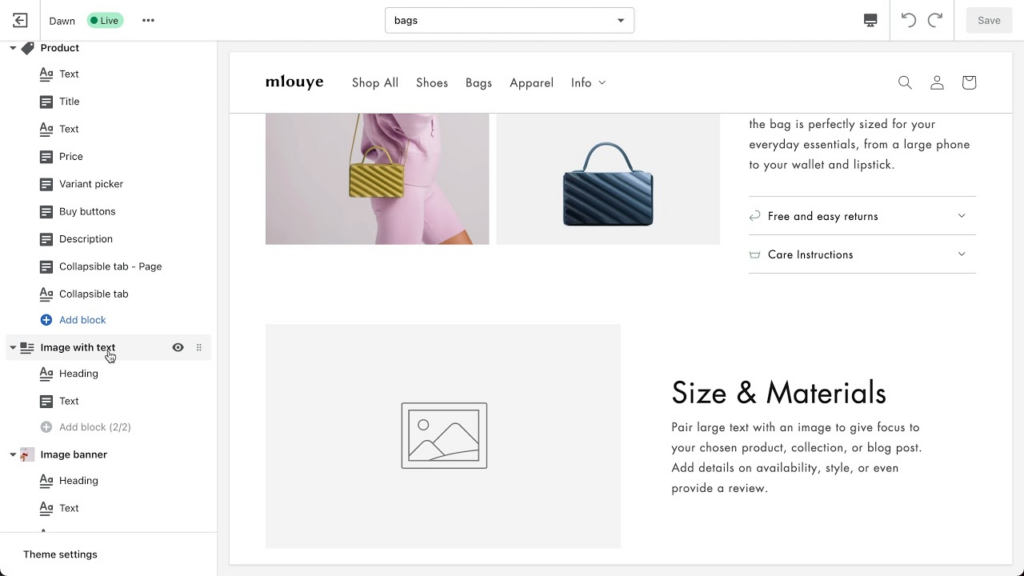
The Shopify 2.0 themes offer you a new level of editing power. Each element can be organized in a hierarchical way in the store. You don’t have to deal with any complicated coding language or look for a Shopify developer to fix elements in your store.
It is built utilizing the new theme standards and supports all previous legacy features. You would be happy to know that it is the fastest theme of its kind. Moreover, the advanced theme architecture runs faster, which in turn offers you a high-speed website.
Brand new tools for developers
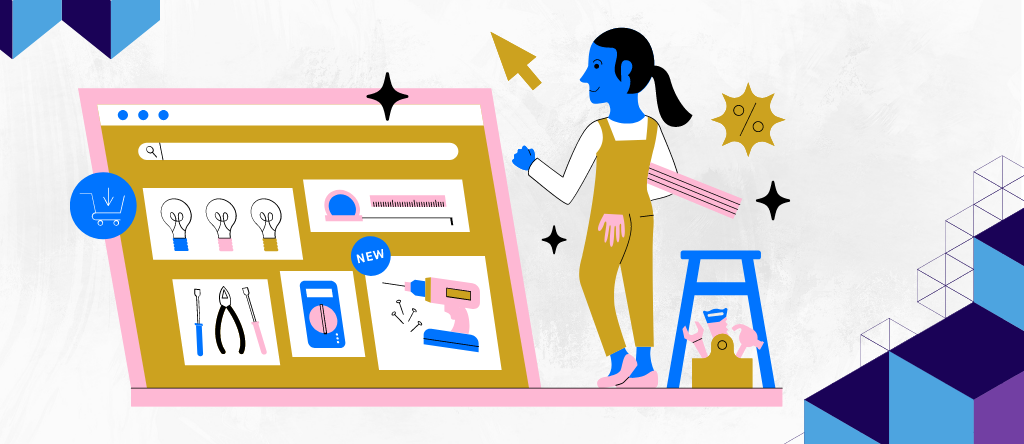
In the earlier version, several tools like slate, theme kit, Slater, and more were used for custom Shopify theme development. However, none of them offered a one-stop solution.
Shopify store 2.0 was one of a kind that not only ticked all the boxes but also made the development super fast. It allowed the developers to work locally, watch the updates and changes in the code, and their live results in a temporary development theme.
Further, the deployment of a live theme has become a matter of seconds. From testing, and developing to integrating, the newly introduced tools streamlined the work of integrating and assisting new themes in the store.
App blocks & theme app extensions
The new upgrade allows the developers to add various features to their online store using the extensions for the theme. Unlike the older version where it was impossible to integrate the app with the theme, online store 2.0 allows the addition of different functionalities with smooth integration of different themes.
The themes built with the dawn architecture offer support to app blocks built with theme app extensions. In it, a code is put into a modular app block that is controlled by the merchant using the Shopify theme editor. In case the app is uninstalled by the merchant, the code gets deleted with the same. This entire process eases the task of troubleshooting.
Abundant sections & blocks
Shopify Sections are customizable and modular elements of a page that offer greater flexibility in designing an online store. For instance: you must have noticed while navigating on an online store homepage, how there was a large slider, a list of top-selling products, a side section for featured blog articles, and likewise.
Previously, the section-based content was only possible on the homepage. In case you wanted it on your product page, you had to build it twice. However, with the introduction of online store 2.0, you can include sections on any page of your online store without even touching a code.
Liquid input setting
Another exclusive feature is the liquid input setting in online store 2.0 which is a lot similar to the HTML setting. It enables you to add custom liquid code to the web pages from the editor itself.
This setting has eliminated the monotonous task of manually changing the code of the theme while adding code for apps using liquid. You don’t have to stress over integrations and your decisions about the store as they are no longer connected.
Metafields
Shopify 2.0 Metafields have made it possible for merchants to add desired content on the product page of the Shopify online store. There is no need for either APIs or any complex coding to make this possible.
The recent upgrade has given space to include additional information so that potential buyers can have the utmost understanding of the product they are purchasing. For example, a size chart, and an ingredient list.
Filepicker
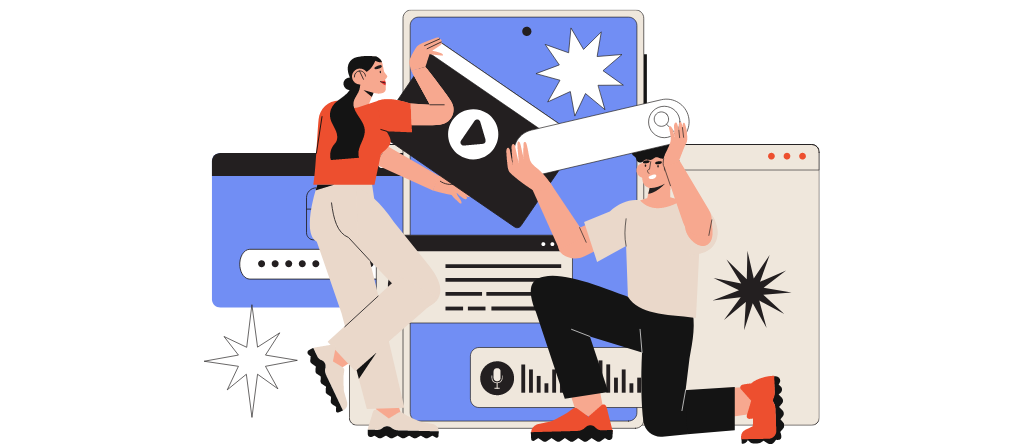
The introduction of a file picker in Shopify online store 2.0 has simplified the task of uploading media files such as images, PDFs, etc. Instead of writing complex code for the same, you can choose a particular file with simple UX from settings/ files.
They are available to use instantly on product pages which further saves time while uploading new products.
Customize your Shopify store with Online Store 2.0
The good news is, that you don’t need to be a techie to customize your store. Shopify’s intuitive, customizable eCommerce platform makes it easy for anyone to build and launch their own online store. In fact, with the new Shopify 2.0 features, customizing your eCommerce site has become even easier.
Upgrade Store using OS 2.0 Themes
First, you need to select a theme that is compatible with OS 2.0. Here is the list of the best Shopify 2.0 themes you can consider. You can do this through your themes section in your Shopify admin panel as shown in the screenshot below:
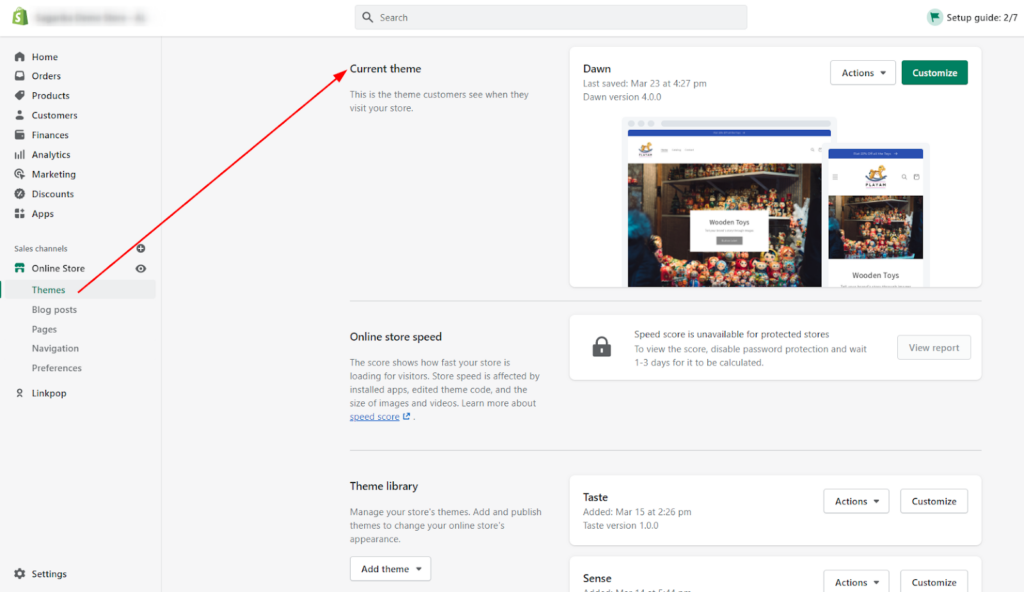
Customize Page Layout Using Sections
With Online Store 2.0 you can now customize your store using sections that are visually represented by blocks on the home page of your store. This means you can update your front page without touching any code at all!
Different sections are available for different templates, so you can choose which ones will work best for your business.

Shopify sections enable users to create custom pages that aren’t necessarily product-focused (like previous versions). You can add different sections like galleries, forms, and maps to customize pages for specific purposes.
Mobile-Friendly Interface
Mobile sales are becoming more important than desktop sales for many stores. Online Store 2.0 comes with mobile-friendly themes by default. Mobile responsive templates automatically adjust the layout of your store to fit the size of different devices like smartphones or tablets.
Moreover, the Shopify 2.0 themes offer mobile-specific settings to optimize the page output for mobile devices. One of the examples is shown below:
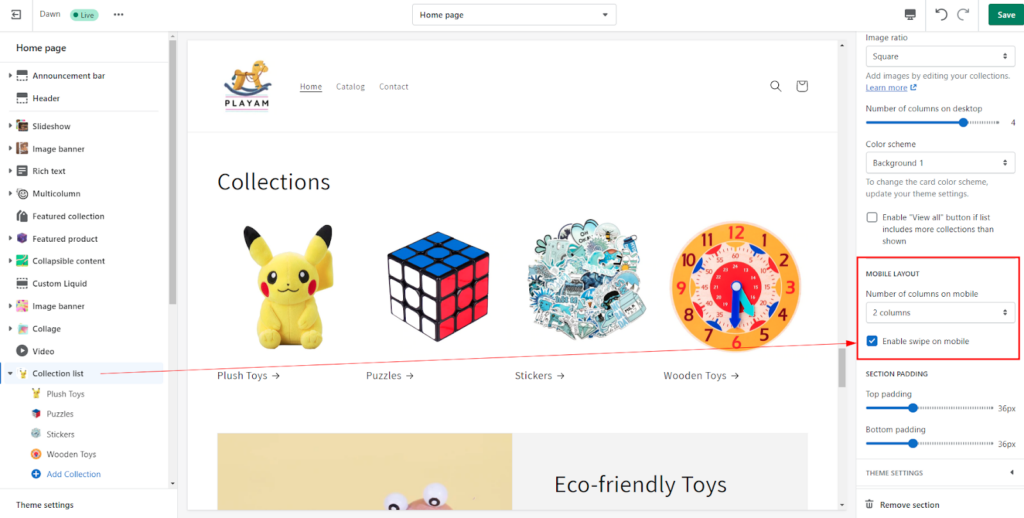
Using Dynamic Content with Metafields
Shopify Online Store 2.0 allows you to create custom content connected to your products, collections, and pages. Using Shopify’s metafields functionality, you can add extra data fields to almost every object in Shopify; this is where you’ll enter the content you want to be displayed on your site.
For example: If you have a clothing store and want to show additional information about materials, features, or care instructions, this is something you can do using dynamic content with metafields.
Here I have added “estimate Shipping information” on the product page using metafields.

Add Product Filters to Collection Pages
Shopify 2.0 gives you the option to feature products on collection pages using filters. Adding filters to your collection page helps people find the right product quickly and easily. It also provides a better user experience for your customers by bringing the catalog navigation tools they expect from brick-and-mortar stores into their online shopping experience.
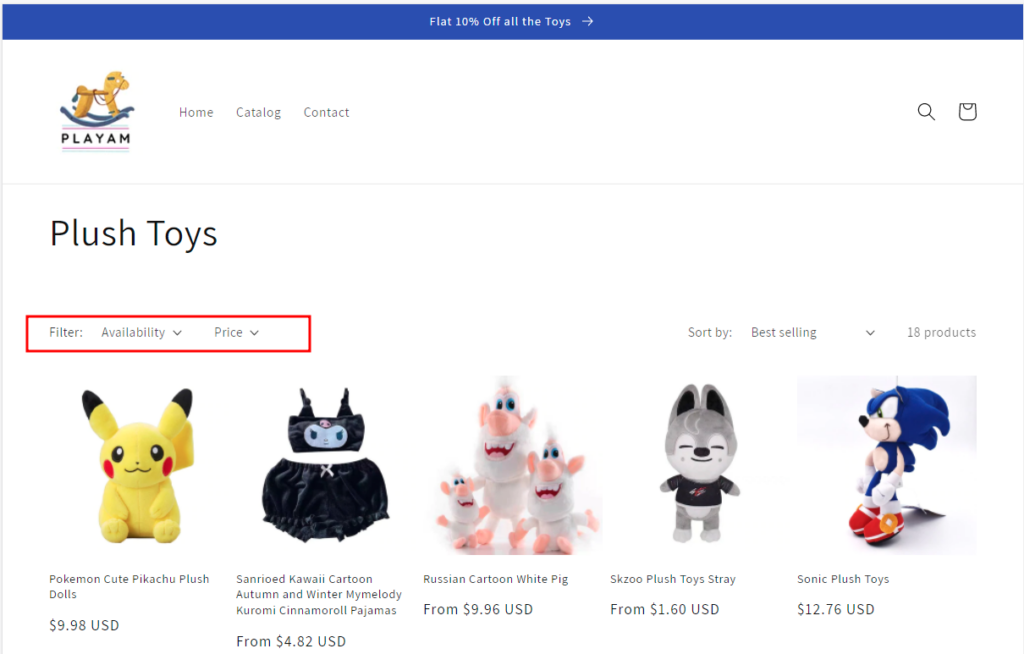
For example, if you’re selling t-shirts, you might want to set up a filter for sizes or colors, but not for price; for jewelry, however, price is likely more important than color.
Wrapping up: In conclusion
Shifting to Shopify store 2.0 isn’t mandatory but is the need of the hour. It will offer you all the freedom to improve the performance of your Shopify store. The process of building an eCommerce store has become super easy.
If you wish to get things done flawlessly, hiring Shopify experts is the wisest decision to make.
Aureate Labs will help you in Shopify store customization with Online Store 2.0. Our Shopify professionals will accomplish everything for your online store with their diverse experience on various projects. You just have to take a step and they will be ready to take 100 more for your e-commerce business.







Post a Comment
Got a question? Have a feedback? Please feel free to leave your ideas, opinions, and questions in the comments section of our post! ❤️